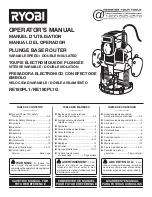
79
Relationship between WRED and queuing mechanisms
Figure 29 Relationship between WRED and queuing mechanisms
Through combining WRED with WFQ, the flow-based WRED can be realized. Because each flow
has its own queue after classification, a flow with a smaller queue size has a lower packet drop
probability, when a flow with a larger queue size has a higher packet drop probability. In this way, the
benefits of the flow with a smaller queue size are protected.
Introduction to WRED configuration
WRED configuration approaches
You can configure WRED parameters on an interface and enable WRED.
Introduction to WRED parameters
Determine the following parameters before configuring WRED:
•
The upper threshold and lower threshold
—When the average queue size is smaller than the
lower threshold, no packet is dropped. When the average queue size is between the lower
threshold and the upper threshold, the packets are dropped at random. The longer the queue is,
the higher the drop probability is. When the average queue size exceeds the upper threshold,
subsequent packets are dropped.
•
The exponent used for average queue size calculation
—The bigger the exponent is, the
less sensitive the average queue size is to real-time queue size changes.
•
Denominator for drop probability calculation
—The bigger the denominator is, the smaller
the calculated drop probability is.
Configuring WRED on an interface
Configuration procedure
Before configuring the
qos wred enable
command, you must enable WFQ queuing on the interface.
















































